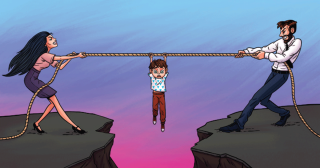How to Fall Asleep in 2 Minutes According to the US Navy
Falling asleep quickly can be a challenge, especially in stressful or uncomfortable environments. The US Navy developed a technique designed to help soldiers fall asleep in just 2 minutes, even in high-pressure situations. This method was introduced during World War II to help pilots and soldiers get the rest they needed in difficult conditions. With practice, it can work for anyone. Here’s how to do it:
Step 1: Relax Your Body
•Start with your face: Close your eyes and focus on releasing any tension in your face. Let your forehead, jaw, and tongue relax completely. Many people unknowingly carry stress in their facial muscles.
•Relax your shoulders: Let your shoulders drop as low as possible, as if they are sinking into the bed or surface you’re lying on. Release any tension in your neck as well.
•Relax your arms: Begin with your dominant arm. Imagine your arm getting heavy, relaxing your biceps, forearms, hands, and fingers. Then, repeat this process with your other arm.
Step 2: Relax Your Legs
•Start with your right leg: Allow your thigh, calf, ankle, and foot to become completely relaxed, feeling them sink into the surface beneath you.
•Move to your left leg: Repeat the same process on your left leg, releasing all tension until your entire body feels heavy and fully relaxed.
Step 3: Clear Your Mind
Once your body is fully relaxed, it’s time to clear your mind. The Navy method focuses on calming your thoughts, as stress and overthinking can keep you awake.
•Visualize a peaceful scene: Imagine a calming, peaceful scene—such as lying in a canoe on a calm lake under a clear blue sky or resting in a cozy hammock in a quiet forest. This visualization helps distract your mind from racing thoughts.
•Use repetition: If visualization is difficult, try repeating the phrase, “Don’t think, don’t think, don’t think,” over and over in your mind for about 10 seconds to prevent distracting thoughts from creeping in.
Step 4: Practice
The US Navy technique may not work the first time, but with practice, it can become an effective tool to help you fall asleep quickly. The key is consistency and allowing your body and mind to fully relax.
Final Thoughts
While this method may seem simple, it’s been used by soldiers and pilots in high-stress situations to fall asleep in just a couple of minutes. Give it a try and, with regular practice, you may find yourself drifting off faster than ever before.










